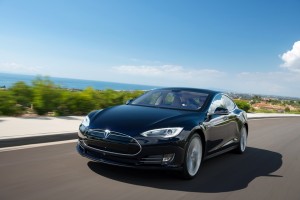Pure Electric Vehicles (PEVs) are available at dealerships now, the question is, are they here to stay? Can you risk purchasing a car that may not exist 5 years from now? And will they come down in price enough to make them affordable? These are some of the key questions that will determine the success or failure of EVs and, in some cases, their manufacturers.
Whatever you may think of auto manufacturers the reality is you won’t find a more risk adverse group on the planet. Generally there are only three reasons why any major manufacturer takes a risk:
- Market conditions are changing rapidly and the manufacturer must take a risk to remain competitive. This happened during the OPEC oil embargo of the early 70’s and resulted in such forgettable vehicles as the Chevy Vega, Ford Pinto, and AMC Gremlin.
- A government forces the manufacturer to take a risk. As a result of the OPEC embargo the US government set corporate average fuel economy standards (CAFE) which have gradually raised the average miles per gallon of cars sold in the United States. This hasn’t been a huge risk for American manufacturers as the government has supplied a lot of financial support to “ease the pain”.
- The threat of bankruptcy forces the manufacturer to take a risk. Apple was in desperate straits when they re-hired Steven Jobs as CEO, as was Chrysler when it hired Lee Iacacco. Due to brilliance and marketing savvy these two individuals saved their respective enterprises.
There is a final, fourth reason a manufacturer takes a risk but it only applies to new manufacturers or small existing ones. This reason is the advent of a new technology. This was certainly true with Texas Instruments and their invention of the LED – which led to digital watches and pocket calculators.
Unfortunately the fourth reason for risk taking doesn’t always end well in the automotive world – Tucker, Bricklin, and DeLorean come to mind. Still, there are exceptions. Tesla Motors, due to the strength of its charismatic, hard charging CEO (not unlike Steven Jobs), appears to be on the verge of major success. If Tesla succeeds it will be the first new major auto manufacturer in more than 50 years. And, based on recent news reports, they probably won’t have to worry about competition from Fisker (Fox News)
So given the risk adverse nature of auto manufacturers, why are they taking one with electric vehicles? Because the market is changing and governments are pushing. Europeans already pay at least $8.00 per gallon according to Bloomberg.com, and the US may not be far behind, as gas prices are already over $5.00 per gallon in Southern California. Auto demand is ramping up in China, India and Brazil as their economies improve. Its true all these countries are investing in electric cars, but not enough to prevent the demand for oil from skyrocketing.
The United States government is also playing a major role. In 2007 President Bush signed the Energy Independence and Security Act. It sets a CAFE goal of 35 miles per gallon for all vehicles, including for the first time light trucks, by the year 2020. To help manufacturers reach this goal the government has provided money to manufacturers in addition to tax credits for consumers to help boost the development and sale of electric cars.
So, are electric vehicles here to stay? Maybe not. Just as there are factors forcing the development of electric cars there are other that threaten to derail them. These factors are battery technology and battery charging infrastructure. While it is possible to manufacture an electric vehicle with a range of over 200 miles, the cost is prohibitive. Battery technology needs to improve to the point where a pure electric vehicle has a range of over 200 miles and carries only a slight purchase premium – like hybrids do now.
Fortunately for electric vehicles, the cost of the battery pack is decreasing and battery technology is improving. One simple reason for the cost decline is what is known as “economies of scale”. Economies of scale reference the fact that production efficiency increases as the number of items being produced increases. The cost per item decreases because fixed costs are shared over the increased number of items. Energy Secretary Steven Chu predicts that costs for a 40 mile range battery will drop from a price in 2008 of $12K to $3,600 in 2015 and further to $1,500 by 2020.
Next the electric vehicle charging infrastructure must improve. Consumers will resist making a purely electric vehicle their sole means of transportation until they are assured they will not be stranded with a dead battery. This is slowly changing with the advent of quick-charging stations found, mostly on the east and west coast, that allow an electric car to be recharged in an hour or two minutes. Tesla Motors is making its own way with Supercharging stations that will recharge the Tesla S and future Tesla products in as little as 30 minutes.
So are electric cars here to stay? Manufacturers think so. Governments think so too. But can you risk buying one? It depends on how and where you drive. If you can stay close to a charging station (your own garage is the surest bet) you should be okay. I have to admit when I faced this choice I chose a plug-in hybrid electric vehicle. But pure electric vehicles are dropping in price and the next time I choose a vehicle I could easily go with a pure electric. The biggest problem with pure electric vehicles is the battery pack, but price and technology are improving. If they continue to do so, the electric car is here to stay.




